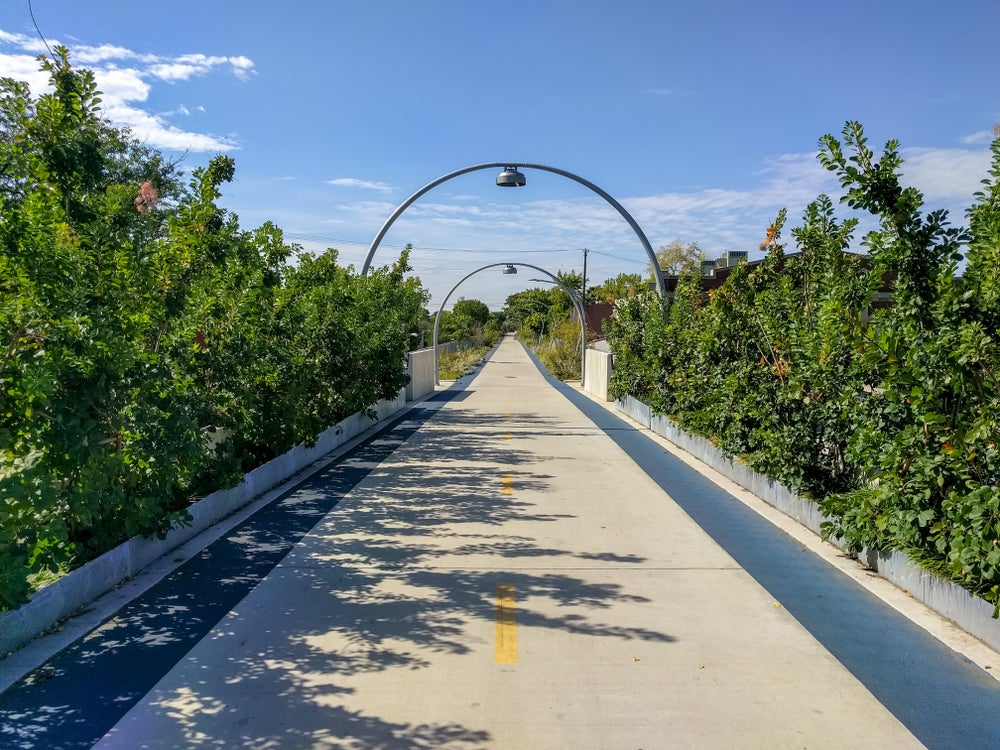Transforming an out-of-service railway into an urban greenway
story title

In many instances, Chicago’s aging infrastructure is a problem. For five creative seniors in the Department of Civil and Materials Engineering, it’s an opportunity.
The team of Griffin Fuller, Alyssa Solomon, Jack Timmins, Pengcheng Wang, and Qin Wang are reimaging El Paseo, Spanish for “The Trail,” which is an urban greenway slated for construction in the Little Village and Pilsen neighborhoods on Chicago’s South Side. An urban greenway is a bike and walking trail that is featured in the city sphere while being surrounded by the natural environment, or green vegetation and flora.
“Our inspiration came from observing the engineering marvel of other makeshift thoroughfares such as the Bloomingdale Trail on [Chicago’s] North Side and the High Line in New York City,” said Fuller. “The aforementioned trails are examples of rails-to-trails, a relatively new phenomenon that is making utility out of defunct railways to transform them into ecological safeguards and alternative transportation routes.”
During a visit to the Bloomingdale Trail, the students interviewed bicyclists who told them that they had come from the South Side of Chicago to ride this linear path because a trail doesn’t exist in their neighborhood. Armed with this information, the team started looking for a potential area of unused land to visualize the implementation of a similar green path in the neighborhoods that desired it. After weeks of searching, they decided to start at the intersection of Cermak Road and Canalport Avenue, which is a former railroad network.
“We hope to see to El Paseo constructed in the real world,” said Fuller. “We were surprised to find out that there is an actual bidded project underway to design and build this greenway, so we found excitement in being able to finish our design for a small section of the trail before the real-life project managers could.
“We hope that the final design for the trail appeals to all parties involved, most importantly, the community members and residents who inhabit the same space with El Paseo. The trail should be used safely for all travelers, interrupt traffic flow as infrequently as possible, contain and use stormwater effectively, be aesthetically appealing, prevent spikes in property costs, and be sustainable for at least the next 50 years.”